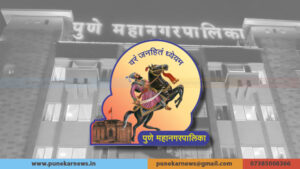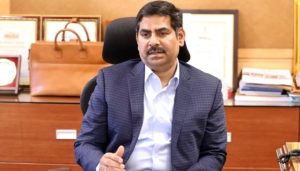Sushma Swaraj critical, admitted in AIIMS Delhi
New Delhi, August 6, 2019 : Former External Affairs Minister Sushma Swaraj has been admitted to All India Institute of Medical Sciences (AIIMS), Delhi, after she suffered from heart attack on Tuesday night. Five member team is treating her after she was brought in unconscious state.
After passing of Jammu and Kashmir Reorganisation Bill by the Lok Sabha today, at 7.23 pm she tweeted, “@narendramodi ji – Thank you Prime Minister. Thank you very much. I was waiting to see this day in my lifetime.”
A senior leader of Bharatiya Janata Party, Swaraj was serving as the Minister of External Affairs of India from 26 May 2014 to 30 May 2019; she was the second woman to hold the office, after Indira Gandhi.
Sushma Swaraj was born on 14 February 1953 at Ambala Cantt, Haryana, to Hardev Sharma and Shrimati Laxmi Devi. Her father was a prominent Rashtriya Swayamsevak Sangh member. Her parents hailed from Dharampura area of Lahore, Pakistan. She was educated at Sanatan Dharma College in Ambala Cantonment and earned a bachelor’s degree with majors in Sanskrit and Political Science. She studied law at Punjab University, Chandigarh. A state-level competition held by the Language Department of Haryana saw her winning the best Hindi Speaker award for three consecutive years.
In 1973, Swaraj started practice as an advocate in the Supreme Court of India. Swaraj began her political career with Akhil Bharatiya Vidyarthi Parishad in the 1970s. Her husband, Swaraj Kaushal, was closely associated with the socialist leader George Fernandes and Sushma Swaraj became a part of George Fernandes’s legal defence team in 1975. She actively participated in Jayaprakash Narayan’s Total Revolution Movement. After the Emergency, she joined the Bharatiya Janata Party. Later, she became a national leader of the BJP.
She was a member of the Haryana Legislative Assembly from 1977 to 1982, acquiring the Ambala Cantonment assembly seat at the age of 25, and then again from 1987 to 1990. In July 1977, she was sworn in as a Cabinet Minister in the Janata Party Government headed by then Chief Minister Devi Lal. She became State President of Janata Party (Haryana) in 1979, at the age of 27 years. She was Education Minister of Haryana state in the Bharatiya Janata Party–Lok Dal coalition government during the period of 1987 to 1990.
After a tenure in national level politics, in October 1998 she resigned from the Union Cabinet to take over as the first female Chief Minister of Delhi. However, the BJP had lost the Assembly elections because of rising prices and inflation. She resigned from her Assembly seat and returned to national politics.
In April 1990, she was elected as a member of the Rajya Sabha and remained there until she was elected to the 11th Lok Sabha from South Delhi constituency in 1996.
Swaraj was elected to the 11th Lok Sabha from South Delhi constituency in April 1996 elections. She was Union Cabinet Minister for Information and Broadcasting during the 13-day government of PM Atal Bihari Vajpayee in 1996.
Union Minister I&B & Telecommunications
She was re-elected to 12th Lok Sabha from South Delhi Parliamentary constituency for a second term in March 1998. Under the second PM Vajpayee Government, she was sworn in as Union Cabinet Minister for Information and Broadcasting with additional charge of the Ministry of Telecommunications from 19 March 1998 to 12 October 1998. Her most notable decision during this period was to declare film production as an industry, which made the Indian film industry eligible for bank finance. She also started community radio at universities and other institutions.
In September 1999, BJP nominated Swaraj to contest against the Congress party’s national President Sonia Gandhi in the 13th Lok Sabha election, from the Bellary constituency in Karnataka, which had always been retained by Congress politicians since the first Indian general election in 1951–52. During her campaign, she addressed public meetings in the local Kannada language. She secured 358,000 votes in just 12 days of her election campaign. However, she lost the election by a 7% margin.
Minister for Information and Broadcasting
She returned to Parliament in April 2000 as a Rajya Sabha member from Uttar Pradesh. She was reallocated to Uttrakhand when the new state was carved out of Uttar Pradesh on 9 November 2000.[19] She was inducted into the Union Cabinet as Minister for Information and Broadcasting, a position she held from September 2000 until January 2003.
Union Health Minister
She was Minister of Health, Family Welfare and Parliamentary Affairs from January 2003 until May 2004, when the National Democratic Alliance Government lost the general election.
As Union Health Minister, she set up six All India Institute of Medical Sciences at Bhopal (MP), Bhubaneshwar (Odisha), Jodhpur (Rajasthan), Patna (Bihar), Raipur (Chhattisgarh) and Rishikesh (Uttrakhand).
Swaraj was re-elected to the Rajya Sabha for third term in April 2006 from Madhya Pradesh state. She served as the Deputy leader of Opposition in Rajya Sabha till April 2009.
Leader of Opposition, 15th Lok Sabha
She won the 2009 election for the 15th Lok Sabha from the Vidisha Lok Sabha constituency in Madhya Pradesh by the highest margin of over 400,000 votes. Sushma Swaraj became Leader of Opposition in the 15th Lok Sabha in place of Lal Krishna Advani on 21 December 2009 and retained this position till May 2014 when in 2014 Indian general election her party got a major victory.
Minister of External Affairs
Swaraj has served as the Indian Minister of External Affairs under Prime Minister Narendra Modi from May 2014 to May 2019. She was responsible for implementing the foreign policy of Narendra Modi. She is only the second woman to hold this position after Indira Gandhi.








